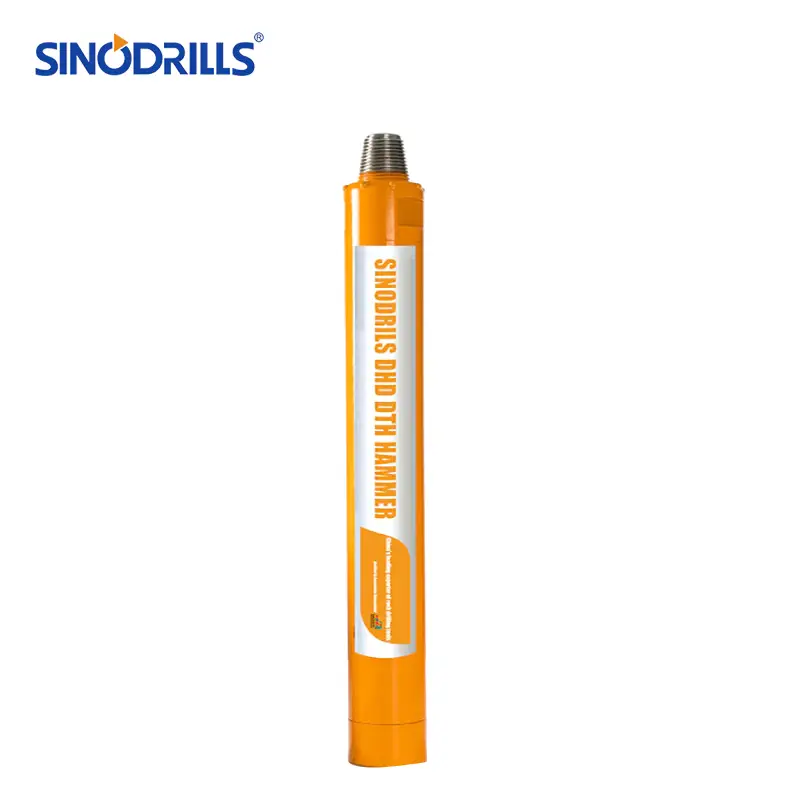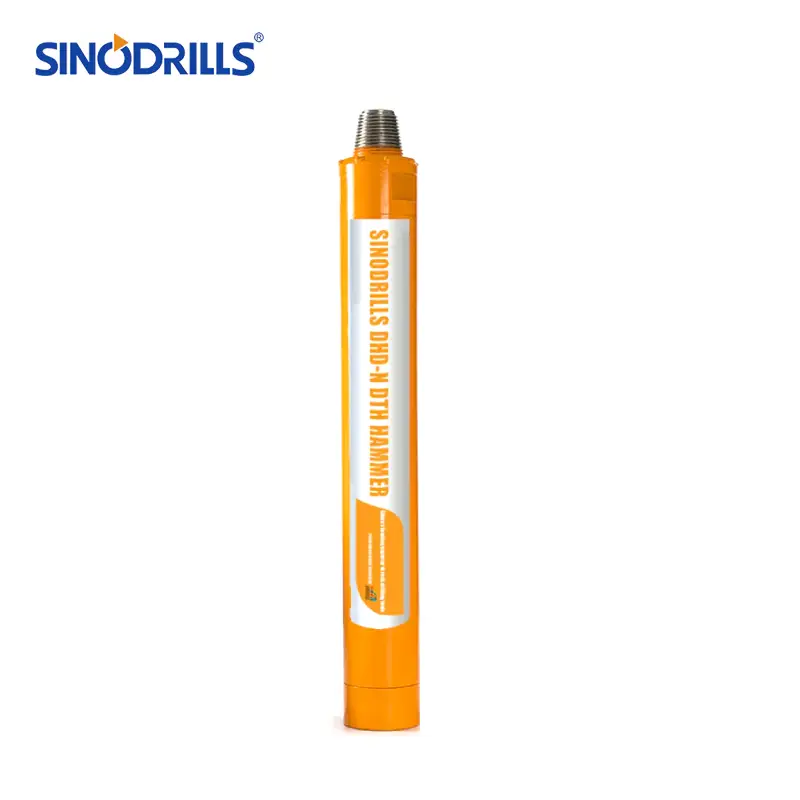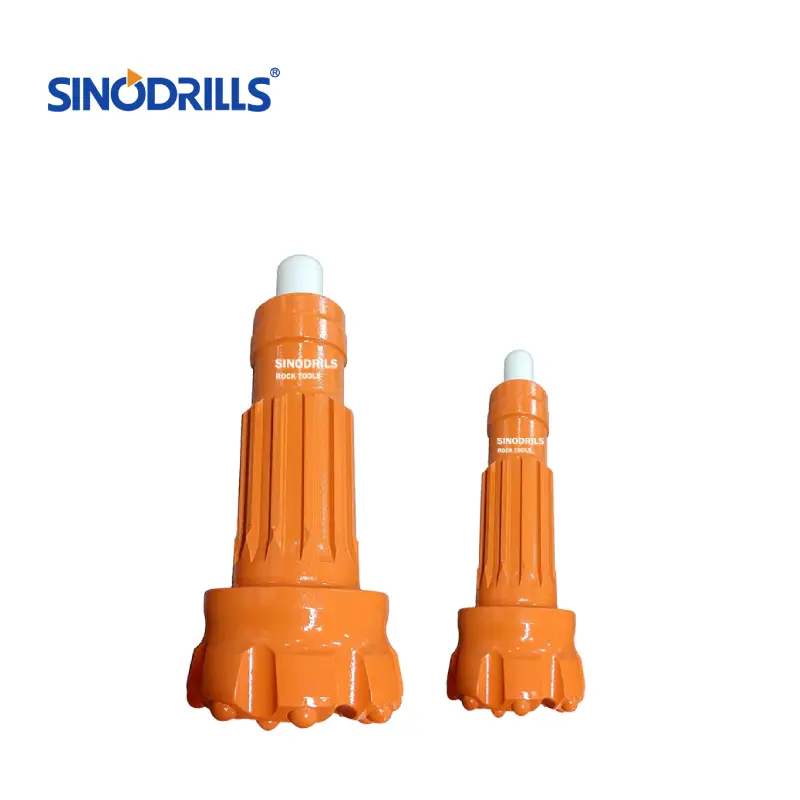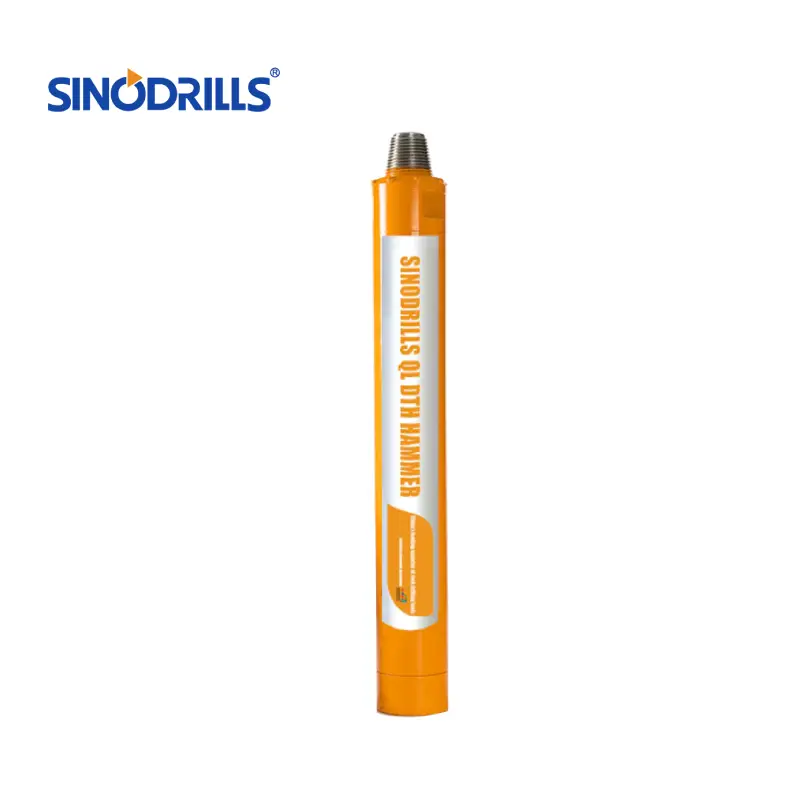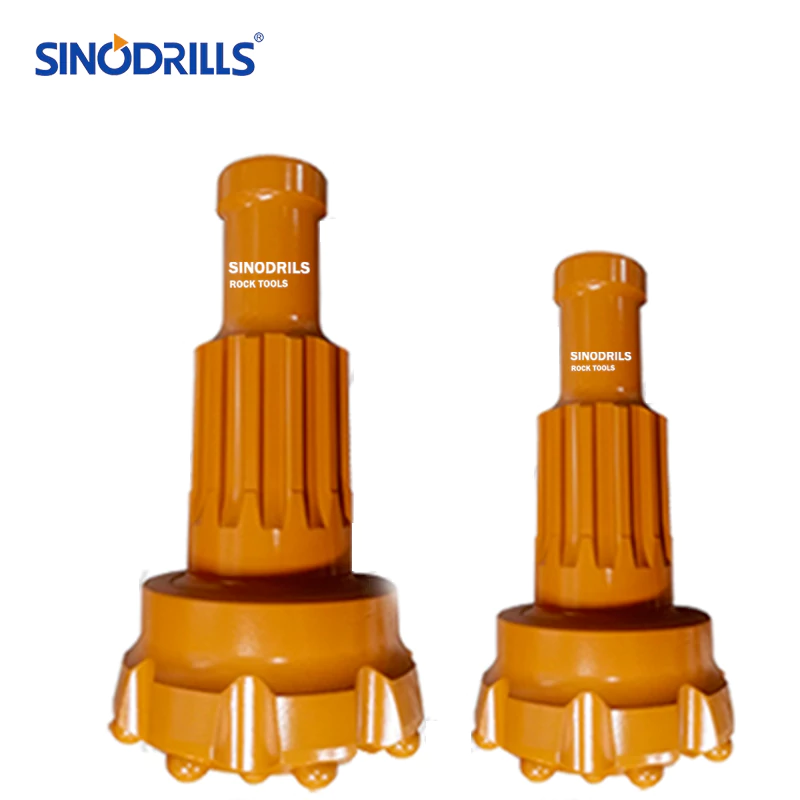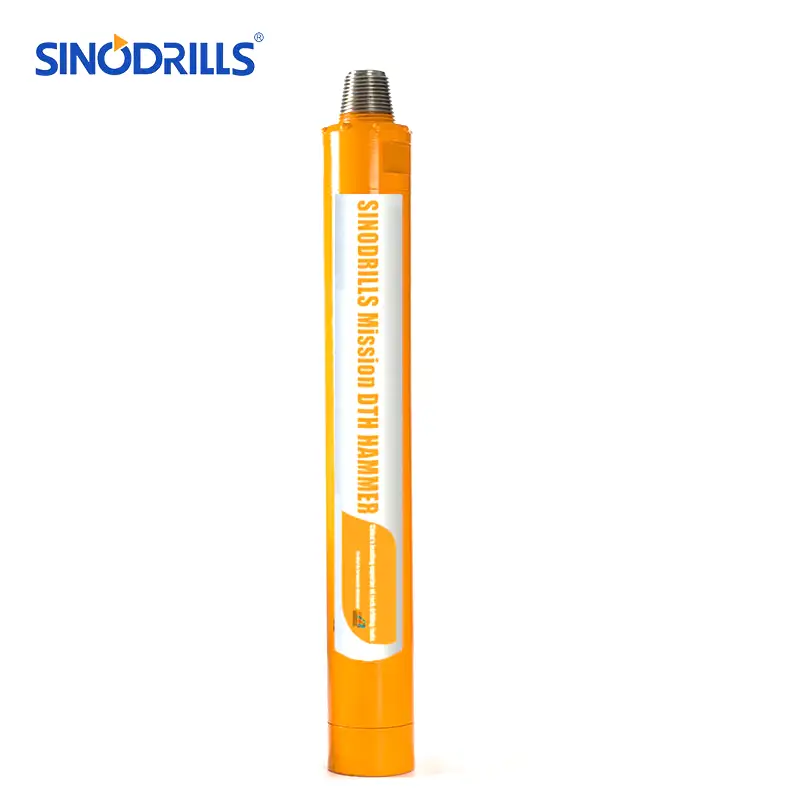Choosing the right DTH (Down-The-Hole) bit shank is paramount for optimizing drilling efficiency and extending equipment life. The shank acts as the vital link between the hammer’s percussive power and the drill bit’s cutting action, dictating how effectively energy is transferred to the rock. Understanding these differences is key to successful drilling.
This blog post will delve into the distinct characteristics of popular DTH bit shank types, including DHD, COP, and QL, along with others. We’ll explore how their unique designs impact compatibility, performance, and durability in various drilling applications, helping you make informed decisions for your operations.
What is DTH Bit Shank
A DTH (Down-The-Hole) bit shank is the rear portion of a DTH drill bit that interfaces directly with the DTH hammer. It is precisely engineered with specific spline patterns, lugs, or other engagement features that allow it to securely fit into the DTH hammer’s chuck.
This critical connection ensures efficient transfer of the hammer’s powerful percussive energy and rotational torque from the hammer to the drill bit’s cutting face, enabling effective rock breakage at the bottom of the borehole.
DTH Bit Shank Types
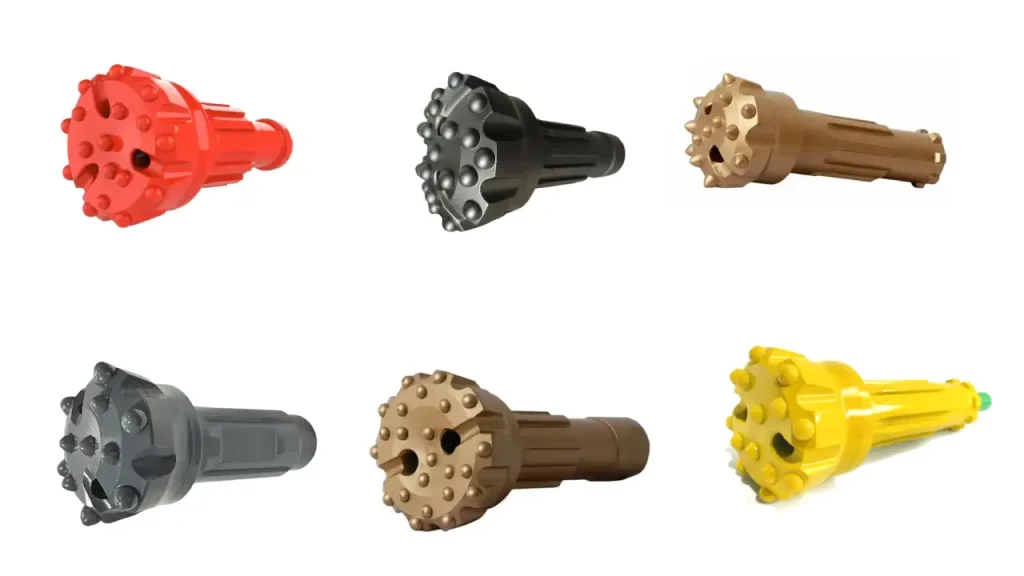
DTH bit shanks are crucial interfaces between the DTH hammer and the bit, designed for optimal energy transfer. Understanding the various types is key to maximizing drilling efficiency and matching the right bit to your DTH hammer.
DHD Shank

DHD (Downhole Hammer Design) shanks are a widely recognized and commonly used type, particularly associated with Ingersoll-Rand (now part of Sandvik) DTH hammers. The DHD series includes various sizes, such as DHD 3.5, DHD 340A, DHD 350, DHD 360, DHD 380, and DHD 112. Each number generally corresponds to the size of the hammer and the recommended hole diameter.
These shanks are designed to provide a robust connection between the bit and the hammer, ensuring efficient transfer of the hammer’s percussive energy to the rock. They feature specific spline patterns and dimensions that fit precisely into the DHD series hammers, making them a popular choice for general blast hole drilling, water well drilling, and construction applications in various rock formations.
COP Shank

COP shanks are another prominent type, historically associated with Atlas Copco (now Epiroc) DTH hammers. Similar to DHD, COP shanks come in various sizes, such as COP 32, COP 34, COP 42, COP 44, COP 54, COP 64, and COP 84. The design aims for high penetration rates and durability, especially in hard and abrasive rock conditions.
COP shanks feature a distinct internal design that allows for efficient airflow and piston movement within the hammer. The precise fit ensures maximum energy transfer and minimizes wear on both the hammer and the bit. They are widely used in mining, quarrying, and civil engineering projects where reliable performance in demanding environments is crucial.
QL Shank

QL (QLX, QL-Series) shanks are associated with QL series DTH hammers, often linked to Ingersoll-Rand and other manufacturers that produce compatible designs. This shank type is known for its robust construction and ability to deliver high penetration rates, particularly in hard and fractured ground. QL shanks come in sizes like QL 40, QL 50, QL 60, QL 80, and QL 120.
The QL shank design typically incorporates a larger number of splines (often 12-spline designs) compared to some other types, providing a very strong and wear-resistant connection. This characteristic makes them well-suited for heavy-duty applications where maximum drive and long bit life are desired, including large-scale mining and deep hole drilling.
SD Shank
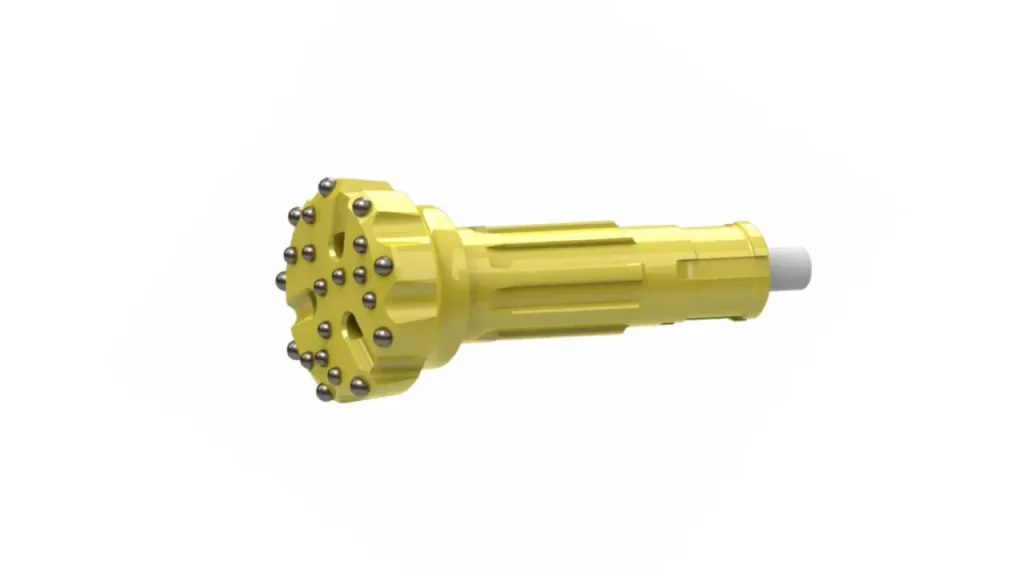
SD (Sandvik/Mission) shanks are widely recognized and used globally, primarily associated with Sandvik and formerly TRW Mission DTH hammers. This series includes sizes such as SD4, SD5, SD6, SD8, SD10, SD12, and SD15. SD shanks are designed for high performance and durability across a broad range of rock types.
The SD shank design is known for its robust construction and efficient energy transfer, contributing to good penetration rates and long bit life. They are a common choice in various drilling sectors, including mining, quarrying, and construction, due to their widespread availability and compatibility with many DTH hammer models.
Mission Shank
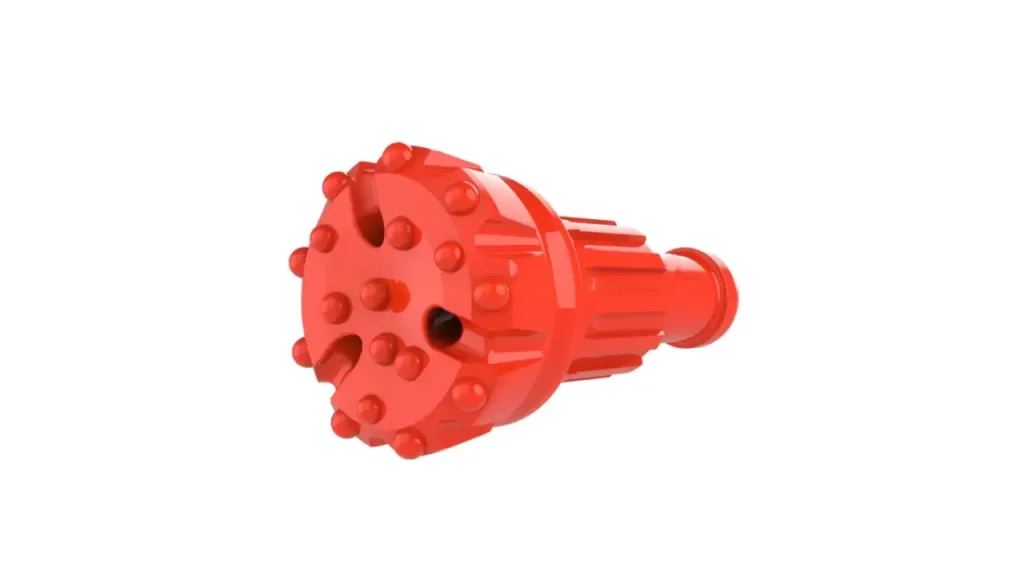
Mission shanks are another proprietary design, often associated with Driltech mission DTH hammers. While some Mission shank designs may overlap or be compatible with other types (like SD), they represent a distinct series designed to work optimally with Mission brand hammers. Sizes include Mission 30, Mission 40, Mission 50, Mission 60, Mission 80, etc.
These shanks focus on providing efficient percussive action and robust construction for reliable drilling performance. They are utilized in similar applications to other major DTH shank types, emphasizing compatibility with the specific hammer brand for optimal drilling system synergy.
Numa Shank

Numa shanks are a specialized type developed by Numa Tool Co., known for their high-performance DTH hammers and bits, particularly in larger diameter drilling. Numa shanks come in various sizes, such as Numa 100, Numa 120, and Numa 125, often designed for larger hole diameters.
Numa’s shank designs are engineered for maximum energy transfer and durability in challenging ground conditions, including fractured rock and overburden. They are a popular choice for applications requiring large diameter boreholes, such as water well drilling, foundation drilling, and specialized construction projects.
CIR Shank
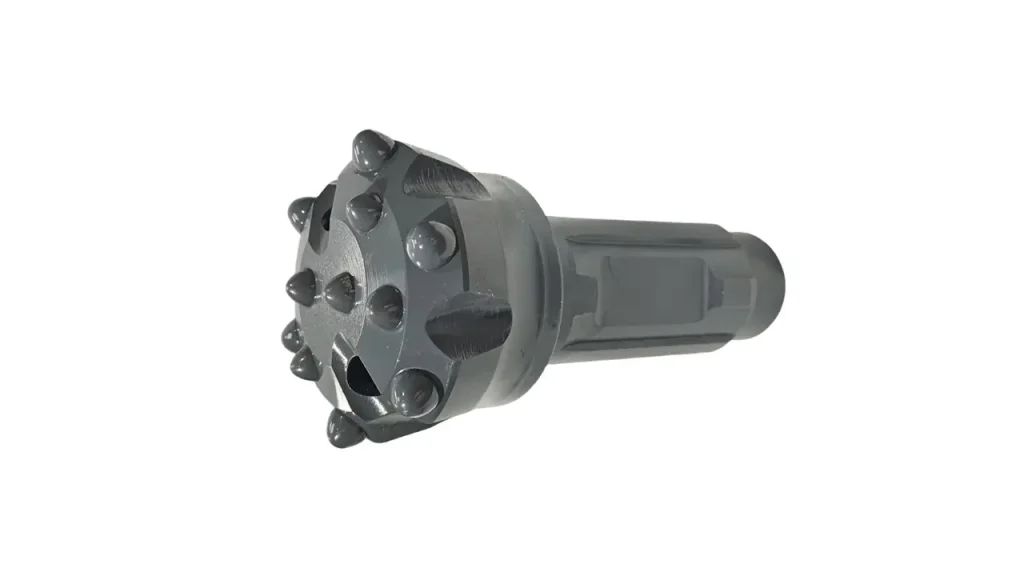
CIR shanks are often associated with low to medium air pressure DTH hammers, particularly common in specific regional markets or for smaller drilling operations. These shanks might have a simpler design compared to the high-pressure, high-performance shanks, but they are effective for their intended pressure ranges and applications.
CIR bits are typically used in less demanding drilling conditions, such as softer rock formations or where lower air pressure compressors are utilized. They offer a cost-effective solution for a variety of general drilling tasks.
BR Shank
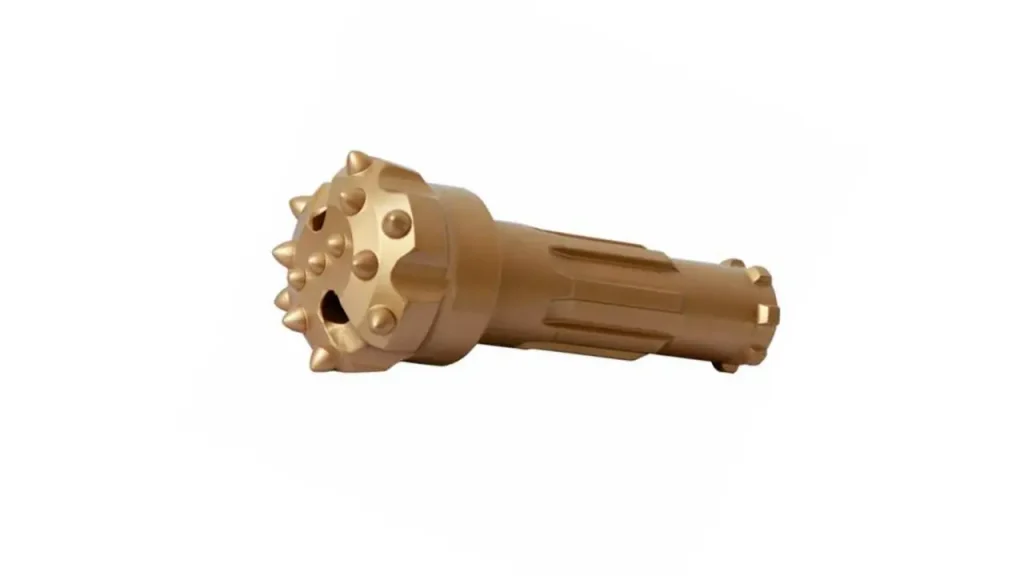
BR shanks are another type of DTH bit shank, sometimes seen in the market, often linked to specific regional manufacturers or older hammer designs.11 Like other shanks, BR shanks (e.g., BR2, BR3) are designed to fit specific BR series DTH hammers, ensuring proper function and energy transfer.
Their usage is typically tied to the compatibility with the corresponding BR hammer series, and they are employed in various drilling applications depending on the hammer’s capabilities and the geological conditions.
Here’s a table summarizing the primary types of DTH bit shanks:
| Shank Type | Common Associated Hammer Brands/Series | Key Characteristics | Typical Applications |
|---|---|---|---|
| DHD | Ingersoll-Rand (Sandvik), GSE DHD | Robust spline patterns, widely used global standard | General blast hole, water well, construction |
| COP | Atlas Copco (Epiroc), GSE COP | Designed for high penetration rates, often internal design features | Mining, quarrying, civil engineering (hard rock) |
| QL | Ingersoll-Rand, GSE QL | Often 12-spline designs, strong drive, high durability | Heavy-duty mining, deep hole drilling, fractured ground |
| SD | Sandvik/Mission, GSE SD | Versatile, robust construction, efficient energy transfer | General mining, quarrying, construction (broad range) |
| Mission | Driltech Mission | Proprietary design for optimal match with Mission hammers | Various, specific to Mission hammer users |
| Numa | Numa Tool Co. | Specialized for large diameter drilling, high performance | Large diameter water well, foundation, specialized construction |
| CIR | Various regional manufacturers | Often for low to medium air pressure hammers, simpler design | Smaller operations, softer rock, specific regional uses |
| BR | Various regional manufacturers | Specific to BR series hammers | General drilling, often in specific regional markets |
How to Choose Suitable DTH Bit Shank
Choosing the suitable DTH bit shank is crucial for maximizing drilling efficiency, bit lifespan, and overall operational cost-effectiveness. The selection process is not one-size-fits-all and should be carefully aligned with your existing equipment and the specific demands of your drilling project.
Key factors to consider include:
- DTH Hammer Compatibility: The most critical factor is ensuring the bit shank perfectly matches your DTH hammer’s chuck type. Hammers are designed to work with specific shank patterns (e.g., DHD, COP, QL, SD). Using an incompatible shank will lead to poor energy transfer, premature wear on both the bit and hammer, and potential equipment damage.
- Application and Ground Conditions: Different shank designs may offer subtle advantages in varying rock types or drilling scenarios. For instance, some shanks might excel in highly fractured ground due to their robust drive splines, while others are optimized for consistent penetration in homogenous, hard rock. Consider the rock hardness, abrasiveness, and geological structure of your drilling site.
- Desired Hole Diameter: The shank size is intrinsically linked to the hammer size, which in turn dictates the practical range of hole diameters that can be drilled. Ensure the chosen shank (and thus the hammer and bit) is suitable for the required hole diameter of your project.
- Manufacturer Reputation and Support: Opt for DTH bits from reputable manufacturers known for quality materials and precise engineering. Good manufacturers also provide excellent technical support and clear compatibility guidelines, which can be invaluable when making your selection.
Conclusion
Understanding the distinct DTH bit shank types is crucial for optimizing your drilling operations. Each design, from DHD and COP to QL and SD, offers specific advantages in terms of compatibility, energy transfer, and durability, directly impacting overall drilling efficiency.
Matching the correct shank to your DTH hammer ensures seamless power delivery to the rock face, minimizing energy loss and maximizing penetration rates. This informed selection not only enhances performance but also significantly extends the lifespan of both your bits and hammers, leading to considerable cost savings.
For a reliable supply of high-performance DTH drill bits and DTH hammers, tailored to various shank types and drilling demands, consider Sinodrills. Their extensive range ensures you find the perfect match for your equipment, guaranteeing superior results on every project.


